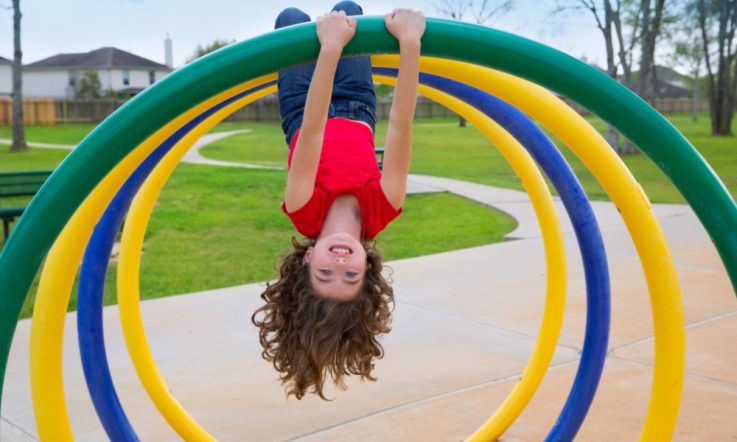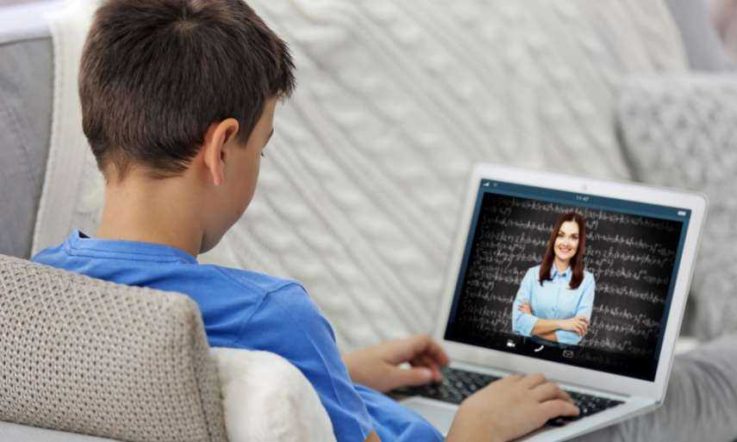In the latest instalment of our Teaching Methods series, editor Jo Earp talks to Rebecca Tomasini - founder and CEO of The Alvo Institute. Based in California, it helps schools design and implement personalised student instruction supported by Blended Learning.
Jo Earp: What is Blended Learning and how long has it been around for?
Rebecca Tomasini: Blended Learning was first initiated in the States in California schools just under 10 years ago. It came about, in California, in part because we have one of the lowest per-pupil expenditures for public education in the country. So, very innovative folks in California wanted to figure out: How do you deliver and provide very rigorous education in the public schools, on the public dollar, and not lose efficacy in terms of student outcomes and student experience and teacher experience?
One of the original innovators I would call out is John Danner, who, along with Preston Smith, founded Rocketship Education. John Danner came from Silicon Valley and saw how technology had permeated so many other parts of industries and sectors and service areas that afford us the life that we enjoy, [but] was stunned to find how little technology had infiltrated and become a part of how public education works. Preston was a highly effective teacher and school leader, who was eager to create a better instructional design.
The idea of blending the learning was to blend traditional instruction with technology-enhanced experiences. That's how we define blended and I think that's how the community at large is defining blended.
JE: What does Blended Learning look like - I guess there's no typical classroom?
RT: No, I think that's exactly the right way to think about it - that there is in fact no typical classroom. Our work has focused on how to use the blended method. So, in really deep expressions of Blended Learning, the blend is based on: What do the kids in front of you at this moment need? And, what kids need this year may be different than what kids need next year.
So, the idea of a blended classroom is really predicated on a lot of modularity ... logistically, of being able to move things around. A lot of the schools that we work with have most of their furniture on wheels or on skid pads that make it very easy to move. Having lots of small desks and chairs that are not connected, so that you can create a space that can accommodate 20 students, or kids can create groups, teachers can create groups ... groups of four, groups of six.
The pedagogical side of that modularity is also in content, and instructional experiences are small, discrete activities, versus a 'one lesson for the class of 25 students', that are catered to, and focused on, what the students need.

A blended classroom at KIPP Courage, Houston, Texas. [Image: supplied]
JE: What role does data and assessment play in Blended Learning?
RT: Our team believes very strongly that data and assessment is absolutely critical because we are most interested in using Blended Learning as a pathway towards personalised learning. Even if the path isn't personalisation, it's just very deep differentiation, teachers need to decide: How will students work today? Who is going to work in small student-led groups? Who is going to work with me as a teacher? Who is going to go and work on an online program?
In order for teachers to make appropriate decisions about who goes where, I believe that they have to be looking at student achievement. Not the traditional student achievement that we've looked at for years in the States, which is that end of year data that has a shelf life that's only slightly longer than the milk that's in my refrigerator. I'm talking about data that teachers are collecting day to day and, often, that really good teachers are collecting and holding it in their heads.
In a good blended environment [they are] managing that data with a smart, technology-driven system so that they can understand: What's the efficacy of a certain instructional experience that a student went through? Did they learn what they needed to learn? Are they ready to move on to the next thing? So, the teacher can plan for the very next day.
The quality of configurations and personalised experiences that we see in classrooms have a direct correlation and a very short line between how well that teacher is collecting, analysing, managing and using student achievement data.
JE: Can Blended Learning be used for any school age group and subject area?
RT: We think so. There are definitely opportunities to bring in this method ... from three-year-olds, all the way up to 18-year-olds. We look very carefully at the Zone of Proximal Development, what is age-appropriate in terms of a student's abilities to self-direct their learning, how much time should the little eyes be on computers (we tend to advocate for less screen time the younger a child is). Taking all of those things into account can help an educator make decisions about how best to blend, given the age and grade level.
JE: How is The Alvo Institute working with schools?
RT: We were the first technology-agnostic firm in the US (in 2009) to start working with schools to support them in rethinking their instructional design and how technology might be a component of that.
We've actively chosen to not sell technology and stay out of that part of this movement - instead, our role in helping schools is to help them look at the landscape and what are the most appropriate options for them when integrating technology, based on their specific needs.
We try and help schools avoid what we call 'the magpie effect' (making purchases based on whatever that new, shiny, interesting thing is out there) and instead make thoughtful purchases that are scalable, affordable, sustainable, but most importantly, relevant to the instructional vision and mission of the school.
We help them dream about what is the ideal school experience and design what that's going to look like. We see schools through the process of implementation and a big part of our work in that phase is also helping teachers transition their practice into this new method.
I think it's probably one of the things we're most proud of, being invited into spaces where you have some very effective practitioners who have been teaching for 20 or 30 years, [and] sitting alongside new practitioners. For both of them, this blended method is new. Helping [them] transition into this new model, which is not being taught yet in our teacher credentialing and licensing programs, is a big part of how we're contributing to this effort here in the States.
JE: What impact is this approach having on student outcomes?
RT: The impact we're seeing has really been quite exciting. We are just finishing our research and evaluation for the programs from our 2013/14 school year and in two of our major initiatives, we are seeing statistically significant gains in Mathematics - it's in Math that these two schools have focused their blended methods on (often we pick a specific subject area to do a small scale pilot).
We've seen some really stunning results, both in the growth that the students have seen over the course of the academic year, and also the rate of their achievement. The teachers are attributing these gains to the much more data-driven and data-actionable approach that they're taking to customise learning and create lots of different learning environments.
The other major impact that we're seeing is on teacher practice, and how by leveraging technology we are taking away some of the tedious, rote tasks that really are not a good use of the teacher's time. Teacher salaries are often 70, even 80 per cent of a school organisation's overall budget - that is a huge amount of money being allocated to human capital. We find that a lot of times that human capital is not being utilised most efficiently.
A very basic example is, teachers grading assessments. We can leverage technology to grade assessments - particularly if they are multiple choice assessments, but there are very thoughtful ways to grade more open response assessments - to give teachers time to then analyse those results and plan for action.
Teachers are also reporting that, in exploring and implementing the Blended Learning method, they're going back to why they originally got into teaching, which is to be able to support individual students and to support the very personal journey that every single kid is on.
If you have missed any of the podcasts in our Teaching Methods series, click on the links:
John Fleming discusses explicit instruction
Flipped learning, with Andrew Douch
Visit The Alvo Institute website for more information on its work with schools.



